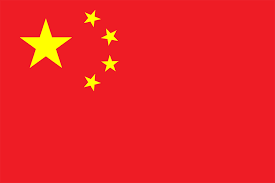- cross-posted to:
- china
- cross-posted to:
- china
Pretty cool article.
about autonomy
Autonomy at Scale Autonomous teams are a long-established management concept, although the term is usually applied to small work units, such as self-managed teams in factories. What Chinese companies have done is to scale team autonomy up to groups of as many as several dozen people, notably at the customer-facing end. The freedom of such teams resonates in China, where autonomy confers status; as the Chinese saying goes, “It’s better to be the head of a chicken than the tail of a phoenix.”
At the e-commerce company Handu Group, the core brand HStyle uses a system of teams to create an internal entrepreneurship model, similar to the one Gary Hamel and Michele Zanini describe in “The End of Bureaucracy” (HBR, November–December 2018). Product teams are responsible for designing, producing, and selling their products. Each team has a minimum of three members: a designer in charge of product development; a web-page specialist responsible for online portal design, display, and sales; and a product management specialist in charge of sourcing, production, inventory, and logistics. If the product or line gets popular, the team size can grow to as many as a couple dozen people.
Although HStyle started with a single product and brand, its teams have created dozens of new offerings. That success has enabled HStyle’s upstream and downstream partners to transform themselves into customized producers. These external partners are independent of Handu Group and complement its factories.
HStyle sets task indicators (sales, gross profit, and inventory turnover) for each team annually. The team controls product development, new product launches, discounts, and promotions. It can continually adjust the products to improve the consumer’s experience. The company ranks team performance every day, and teams’ results are accessible to everyone in real time, putting each team under pressure to deliver. The data and thus the rankings change very quickly. The daily rankings are at the core of HStyle’s internal competition model.
If a team splits up and some members form a new team, the leader of the new team must pay a fee to the original team for its previous training of the acquired staff. Moreover, the company’s financial system automatically transfers 10% of an acquired staffer’s bonus to the original team leader every month for one year. This system encourages each team to reorganize and generate new autonomous teams.
Since 2005, the appliance giant Haier has been creating autonomous teams around the rendanheyi (“people, needs, connections”) model, in which each employee creates value directly for the user. In this model, which aims to support every employee’s entrepreneurial dreams, employees take P&L responsibility, create value for themselves, and cultivate lifelong Haier customers. In 2010 frontline employees were grouped into small, self-managing teams, known as zi zhu jing ying ti (ZZJYTs), which worked directly in the market to address customers’ existing needs as well as to anticipate and fulfill their future needs. In this operational model, each ZZJYT was responsible for its own P&L and members received a share of the profits created by the team. ZZJYTs were connected through a technology platform to the people managing resources at the back end. And people at both the front and back ends built communities of interest that worked together to make sure customer needs were met quickly and effectively, which led to profit growth. Haier built on this foundation and allowed these communities to incorporate as microenterprises with rights to make decisions, hire talent, and distribute compensation. These entrepreneurial teams could also enlist the help of suppliers, other microenterprises, and other partners from within or outside the Haier group as they saw fit.
More recently, Haier has adapted to its evolving market by developing a new organizational format: ecosystem microcommunities (EMs). An EM is a community of microenterprises that exists to address specific sets of user needs. Haier uses contracts to determine the rights and responsibilities of different microenterprises and stakeholders. For example, in 2019 the refrigerator sales microenterprise in Zhengzhou formed an EM with the refrigerator manufacturing microenterprise in Hefei. The two microenterprises agreed on a goal: provide high-quality products delivered on time—the “zero-defect and zero-delay” product. An incentive mechanism was established: If they achieved this goal and saw a profit increase of 20%, the joint unit would be rewarded with a value share of 140,000 RMB; and with a 30% increase, it would be rewarded 230,000 RMB. The two microenterprises achieved the 30% goal.
TL;DR some Chinese companies adopted a large independent team model which these teams have almost total freedom to design, market and sell products.
Some of the companies even make it so these teams get a direct share of the profits.
I can see both sides of an argument here. On one side I’m sure many people would prefer to just have a regular job and a well paying salary and not have to worry about the next product and sales metrics etc. Maybe its a result of alienation but nevertheless its not something many(most?) would enjoy.
On the other hand if you have a more direct connection to your work, you actualy design and are responsible for selling your shit. You are part of a smaller team you get to know and make personal connections instead of just being part of the giant faceless corporation.
Maybe that gives some more meaning to your work, certainly would be more motivated if you have a bigger share of the value you create.
At the very least it is a distinct difference from the individualist mindset we have in the west.
The other half of the article is a critique on western management with one basic premise, western managers are too scared to give up control so this style of management would be embarrassing and unthinkable for them.
Funny how situations seemingly unrelated to Marxism ends up reinforcing it, the writers probably don’t realize but gee I wonder why the PMC doesn’t want to give up control.

